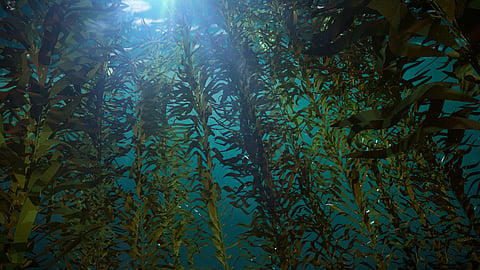

BioMar has announced that their facility in Brande, Denmark, will significantly expand the inclusion of microalgae in their portfolio of raw materials for their flagship products. "Microalgae has been a game-changing strategic ingredient for us for years, and still is. We are now delighted to increase the volumes we use significantly and raise the sustainability bar for our flagship products. Microalgae is no longer a novel idea, it has become a commercial reality", Anders Brandt-Clausen, Managing Director, BioMar Baltics, explains.
The use of microalgae in their flagship product line enables BioMar to ramp up the sustainability criteria, as including microalgae high in long-chain omega fatty acids in feed diets allows for bypassing the wild fish and going straight to the original source of marine omega 3s.
Marine ingredients such as fishmeal and fish oil are excellent sources of nutrients vital for fish nutrition, but finite resources. The increase in the use of microalgae not only ensures that fish get the optimal nutrition required, it also reduces the Fish In : Fish Out ratio and, moreover, helps to relieve pressure on the oceans.
"We see this as the birth stage for the next generation feeds with a highly sustainable profile from Brande. Adding microalgae paves the way for the upcoming developments on our sustainable feeds that our farmers will directly benefit with a reduction in their own on-farm footprint", says Anders Brandt-Clausens.
BioMar 's philosophy is sourcing raw materials and ingredients that don't compete with the human supply chain. Their internal and external research work and development of algae-based ingredients dates back to 2013, although it was in 2016 when the first commercial feeds containing microalgae hit the markets. In 2021, the company reached one million tons of salmon feed containing microalgae. And, finally, 2022 is the year when, with the upscaling of microalgae in the raw material portfolio at the Brande facility, it will be no longer considered a niche ingredient.
All these specific actions were taken with a set of ambitions, that included a target of BioMar feeds being 50% circular and restorative by 2030. For the aquaculture feed producer, the expansion of an extensive raw material portfolio composes one of their most important cornerstones for pioneering innovation. The search for novel ingredients to advance innovation and sustainability is ongoing.
